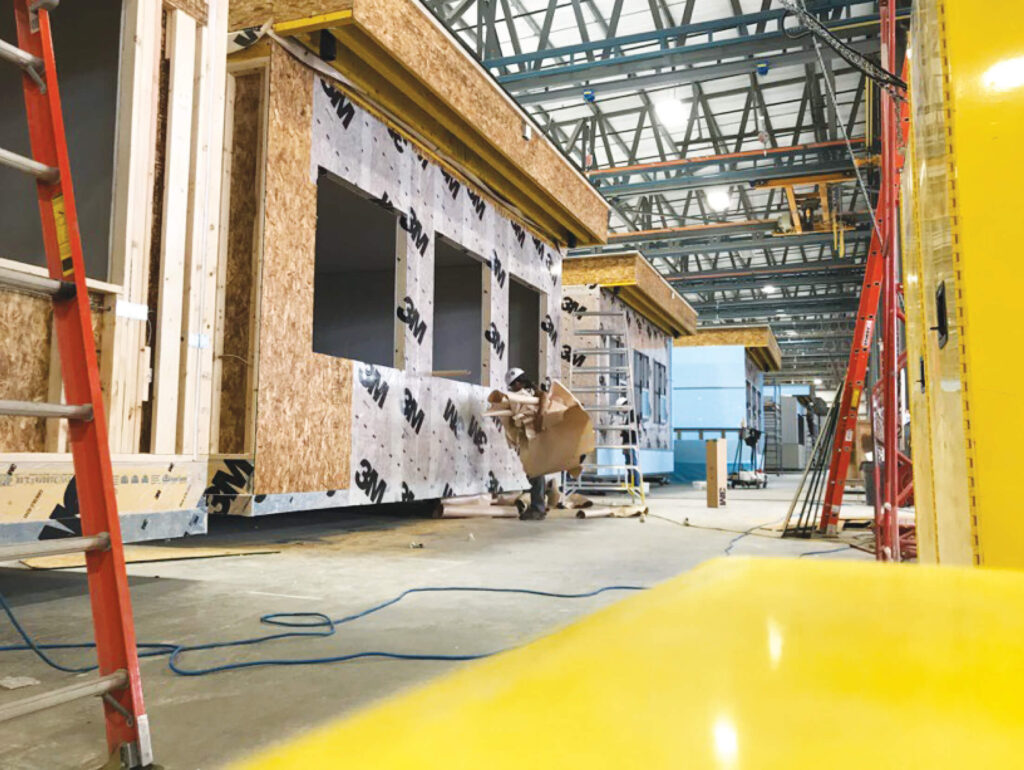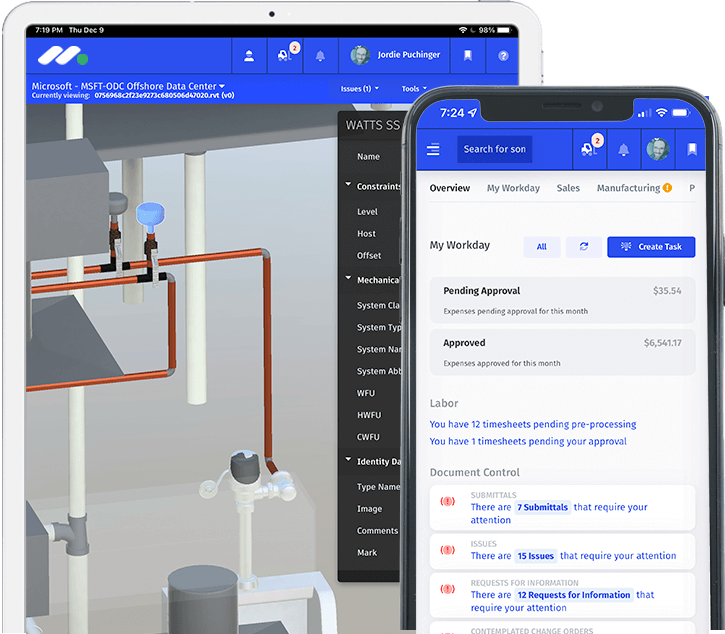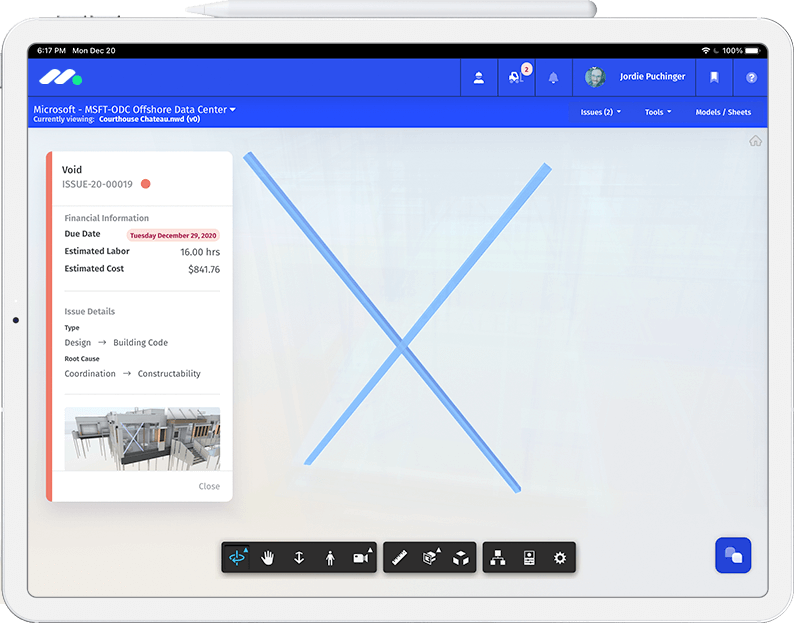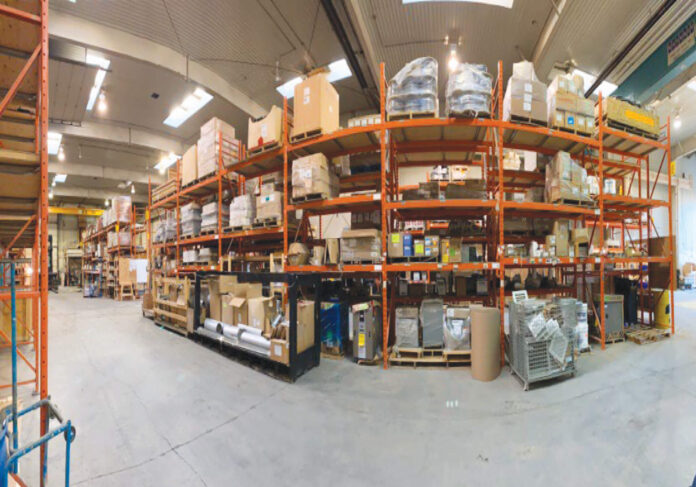Good digital technologies can make an offsite manufacturer a lot more profitable. Then why do so many fail at implementation? Because they lack a map.
• A good solution does not change employees’ responsibilities. It just asks them to do old tasks in new, more effective ways.
• The author advocates for a three-phase adoption process developed by industrial tech company Watlow.
• He describes how this process would work when looking for a technology solution to a couple of common challenges faced by offsite manufacturers.

what workers on the assembly line need each day and will be more accurate when ordering materials.
Technology adoption is top of mind in the offsite industry today, but many leaders grapple with how to approach it. And many have unrealistic assumptions about what they can, and can’t, accomplish.
As co-founder of a company that provides technology solutions to offsite manufacturers, I often find myself in the middle of a conversation where we are simultaneously discussing Bill of Material (BOM) automation from 3D models and the fact that the company is manufacturing with incomplete drawings.
Of course, you can’t automate a complete Bill of Materials from an incomplete 3D model. Even if you have a complete model, you also need an inventory system that can use data from the models to build the BOM.
It’s easy to see why so many manufacturers view technology adoption as a very difficult path. Fortunately, it’s a lot easier if you follow a map that has worked for others.
One map that I’ve found very effective is from Watlow, a 100-year-old world-class industrial technology company based in St. Louis, Missouri that designs and manufactures thermal products. They do an excellent job of breaking the overall journey of technology adoption down into three stages.
In this article, I show how Watlow’s process applies to a common challenge in our industry: how to establish more robust inventory management and labor tracking systems. Inventory and labor tracking are not the only problems that offsite manufacturers need to solve, but from a foundational point of view, they’re critical—and they’re two of every company’s largest expenses.
Arguably, a majority of offsite manufacturers today would struggle to give their technology provider an overall list of vendors and inventory items given a few weeks, never mind generating granular labor data at the unit, component, or workstation levels.
Here’s Watlow’s three-stage model applied to this problem.

go through the office.
1. The Aspirational Stage
The Aspirational Stage is about discovery or information gathering. It starts with identifying priorities, project stakeholders and champions. (Stakeholders are usually C-level executives, but a champion can be anyone who wants to improve the way things are done and is committed to helping make that happen – whether it’s the COO or someone on the shop floor.)
Here, we start collecting the data needed to begin the technology adoption project. That means identifying the processes that you’re currently managing in spreadsheets or tracking on paper.
Our goal is to transition the company away from spreadsheets, paper systems and on-premises silos—where various departments can’t collaborate easily because they all use different technologies. You must identify people who are willing to champion this process and take responsibility for its success.
One key to getting people onboard is to remind them that you’re not making extra work. For instance, when workers need materials, they already have to tell the warehouse; we’re just asking them to do it differently. Rather than radioing the request to the warehouse, they might use an app. The advantage is that the app lets everyone collaborate and the data can help the warehouse learn when each workstation will need materials so that the lumber needed for the day is already waiting when the crew shows up for work.
The Aspirational Stage is also where you choose a technology partner with a solution that fits your current offsite manufacturing business requirements and that has future objective alignment with your company.
A good partner will be able to support you and your organization throughout the entire process—from identifying the information needed to achieve your objectives, to providing personalized, hands-on training support for workers on the shop floor, in the procurement office, or in the warehouse.
Your technology partner should have experience with the offsite industry, including its unique nuances and challenges. They will have seen where processes tend to break down and will understand how information flows through the operation.
Ten years ago, finding a partner like this in North America would have been virtually impossible. Today, you have purpose-built companies such as Moducore and Manufacton driving sustainable innovation in the space from hands-on, boots-on-the-line experience.

While workers can access data from the floor, the office can analyze trends and use that to better manage processes.
2. The Reactive Technology Stage
In this Stage, manufacturers maintain their status quo, but begin consulting the data gathered in Stage 1. This helps them plan how to implement a new technology that will benefit the whole team.
Watlow lays out five design principles for this stage. Together, they define the benefits of an effective technology and form a map that an offsite manufacturer can follow once they have chosen a technology partner. The five principles are Interoperability, Virtualization, Decentralized Access, Service Orientation and Real-time Capabilities.
Remember, we aim to create a connected environment that makes it possible for all parties—production workers, operations people, and jobsite crews—to help the business by way of data contribution. Again, technology companies such as ours are not asking manufacturers, or their employees, to do anything they are not already doing: they’re just asking them to do these tasks a little differently, and in a way that will benefit everyone.
To illustrate, let’s take another look at the examples we introduced in Stage 1.
With the labor example, workers may have previously recorded labor hours on paper time cards. Now, they will enter those hours into a mobile application. This provides the company with immediate, real-time man-hour information by workstation or module.
In the material example, a purchaser who has always faxed printed purchase orders can now create them in a web browser. Shipping and receiving can use that data to receive the goods into inventory.
With the above in mind, here’s what the five design principles look like in practice.
Interoperability. With the new technology, everything is connected. Workstations and kitting stations can communicate with each other. The shop floor can communicate with the warehouse and the warehouse can communicate with the office. Everything is connected to the internet, enabling accessibility and communication.
Virtualization. Rather than standalone physical processes like radioing to the warehouse for materials, or submitting paper time entries, everything is now digital. A material request from the shop floor done in a digital tool can deplete stock in real time as it’s delivered to the shop floor. It could also trigger minimum/maximum buy threshold notifications.
Decentralized Access. Because information from the shop floor is pushed to the office, the people in the office become more proactive. They no longer need to hound the wall framing station for how many 2x4s they will need tomorrow because the data gives them the answer. Making information accessible to everyone who needs it reduces the number of problems and increases the bottom line.
Service Orientation. A process-driven system should create value and efficiency for all contributing parties. Take your warehouse. It likely supports the shop floor and the jobsite—painstakingly, through radio, foot traffic, forklifts and email. A service-oriented approach in a digital tool centralizes those requests and allows for the material handlers to prioritize tasks and material picks.
Real-Time Capabilities. This is the ability to capture and analyze data as it becomes available. For example, the accounting people will no longer have to wait until a project is complete to backflush materials. The availability of real-time data allows them to do this as soon as the materials have been used.
3. The Proactive Technologies Stage
The third stage is where leaders begin to automate their processes. In doing so, they typically discover new and previously untapped opportunities, enabled by the wealth of reliable data coming from various sources on the team.
At this point, a manufacturer is going to have all of the following available:
• The ability to report on labor or material by an employee, module/component, workstation, cost code, department
• The data needed to optimize labor
• An established inventory system that provides, at minimum, read-only access for the entire team
• Bills of Materials developed in a manner that they can be recorded for Procurement and Material handling activities ahead of time
• A Business Intelligence reporting system that can analyze and provide previously unavailable insights based on data such as Earned Value, or Estimated Cost at Completion
• The ability to produce kits and deliver materials to the line before formal material requests occur
At the end of the day, I believe that the largest hurdle holding offsite manufacturers back is the willingness to adopt technology. Many see it as a non-productive, resource-consuming task, but that’s a short-term perspective. What most fail to take into account is the fact that, as I’ve said, they are already doing all the tasks that will be automated by the new technology—they’re just doing it inefficiently in a non-collaborative way. Doing it differently will help the entire company be more efficient and profitable.
Now you understand why premature discussions about generating Bills of Materials from 3D models, or proactively creating kits of materials for various workstations, only lead to frustration. If you want to automate these and other tasks, you need to work through the above map first.

















